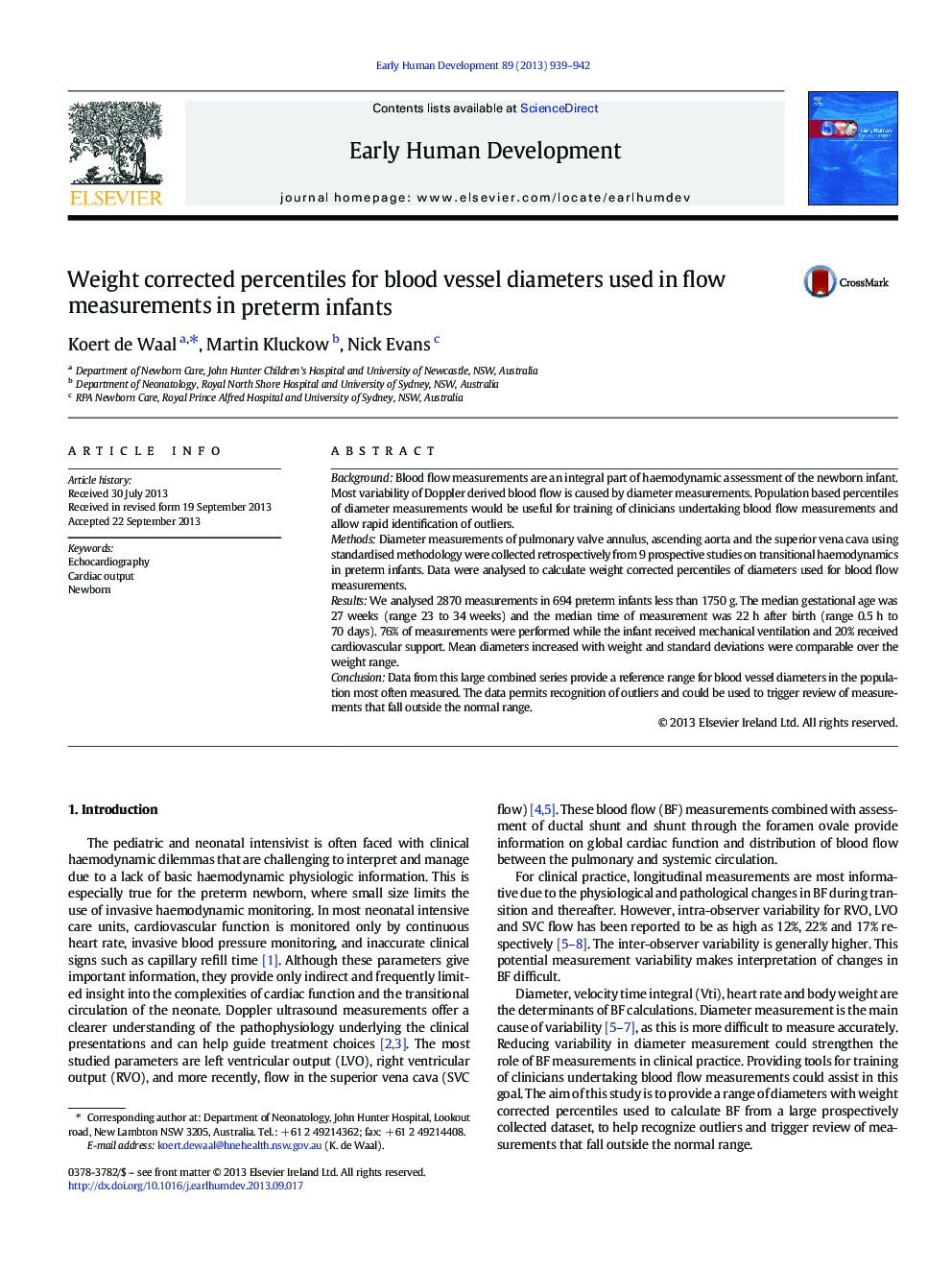| Article ID | Journal | Published Year | Pages | File Type |
|---|---|---|---|---|
| 6171916 | Early Human Development | 2013 | 4 Pages |
BackgroundBlood flow measurements are an integral part of haemodynamic assessment of the newborn infant. Most variability of Doppler derived blood flow is caused by diameter measurements. Population based percentiles of diameter measurements would be useful for training of clinicians undertaking blood flow measurements and allow rapid identification of outliers.MethodsDiameter measurements of pulmonary valve annulus, ascending aorta and the superior vena cava using standardised methodology were collected retrospectively from 9 prospective studies on transitional haemodynamics in preterm infants. Data were analysed to calculate weight corrected percentiles of diameters used for blood flow measurements.ResultsWe analysed 2870 measurements in 694 preterm infants less than 1750 g. The median gestational age was 27Â weeks (range 23 to 34Â weeks) and the median time of measurement was 22Â h after birth (range 0.5Â h to 70Â days). 76% of measurements were performed while the infant received mechanical ventilation and 20% received cardiovascular support. Mean diameters increased with weight and standard deviations were comparable over the weight range.ConclusionData from this large combined series provide a reference range for blood vessel diameters in the population most often measured. The data permits recognition of outliers and could be used to trigger review of measurements that fall outside the normal range.
